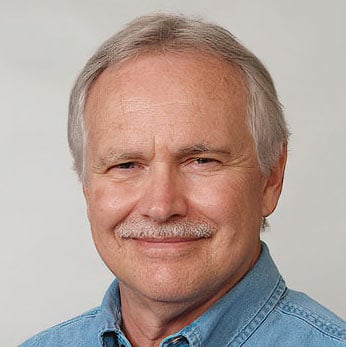The following discussion is part of an occasional series, "Ask the Automation Pros," authored by Greg McMillan, industry consultant, author of numerous process control books, and 2010 ISA Life Achievement Award recipient. Program administrators will collect submitted questions and solicits responses from automation professionals. Past Q&A videos are available on the ISA YouTube channel. View the playlist here. You can read all posts from this series here.
Looking for additional career guidance, or to offer support to those new to automation? Sign up for the ISA Mentor Program.
Greg McMillan’s Question
What can be done to better understand and address how process and equipment design and operating conditions, including production rate, affect automation system design, installation, and performance?
For example, what are the issues with sensors and valves in terms of seeing and affecting what is really going on and the ability of controllers to deal with load disturbances, particularly in terms of dealing with poor mixing, fouling, or frosting of heat transfer surfaces and extremely low and high production rates?
Mark Darby’s Answer
Process control consultants encounter plant design issues or problems that negatively impact how well the process controls can perform, or worse, lead to operating problems. A frequently encountered challenge with distillation columns is a lack of a sensitive tray temperature for control. For example, only a bottom or reboiler return temperature or a tray temperature that is no longer sensitive due to a change in operation (such as due to a change in product specification) is available (without any other thermowells).
Another challenge is with a control valve located in the wrong location. One I recently encountered used a cold stream in a cryogenic process to precool the entering feed, and the control valve for temperature control was on the inlet to the exchanger instead of on the outlet. Due to pressure drops across the control valve, further cooling of the cold stream made hydrate formation more likely. The control valve was operated in a fixed position that kept the temperature in a feasible range, but with increased variability of the outlet temperature of the existing hot stream.
Doug Nicholson’s Answer
The challenges of retraying a large column to obtain a capacity increase can sometimes go spectacularly wrong. I’ve seen cases where a retray (which took an extended shutdown to install) results in a lower capacity column due to downcomer flooding. The plant may not be able to afford the duration and with risk of another shutdown to repair the problem they may be forced to build a new column at great expense. Be careful with retrays that go to the limit.
Another challenge can be if the wrong type of instrument or analyzer is specified so it cannot be used. A challenge with cracking furnaces in an ethylene plant can be the variable heating value of the fuel gas stream due to changes in the fuel hydrogen content. In a plant I recently worked in, a continuous Wobbe index analyzer for fuel gas heating value was installed as a feedforward to all furnaces. Unfortunately, the delay in the measurement made it useless for feedforward control. In this case, a fuel gas heating value disturbance was seen in the furnace coil outlet temperature at four minutes and was nearly over before the Wobbe meter said something was happening. A less accurate but better option is to use a fast density analyzer to infer heating value, but watch out when using a single measurement that is fanned out to all fired heaters. A false reading or clumsy maintenance could cause a big disturbance with a significant risk to the integrity of the fired heaters.
Mark Darby’s Response
In response to the aforementioned challenges, I would just like to emphasize that it is important to plan and budget fixes to correct for design issues, both plant and instrumentation.
George Buckbee’s Answer
Well, this is a broad question, and we could go in many directions! I will suggest a few topics related to short-term and long-term effects that can affect process performance and control performance. There are so many variations on the topic, especially when you consider many different industries. So, I have included a few examples.
Short-term process changes may include changes in:
- Production rate
- Product schedule (especially important in paper, specialty chemicals, and foods)
- Production recipe (including changes to raw materials, fuel sources, or re-blending, for example)
- Weather (especially for processes where raw materials are stored outdoors)
These changes are either operator-controlled and/or easily observed, so plant personnel know when they happen. Yet, control systems are not always configured to adjust to the new process conditions. For more optimal performance, consider adapting controller gains and adjusting alarm limits for each new set of conditions. Historical process data can be very helpful with this.
Short-term equipment changes may include changes to equipment settings, replacement or repair of parts (i.e., filters), catalyst poisoning, or sudden equipment failures. These changes are harder to detect and represent a key opportunity in automated diagnostics. Industrial internet of things (IIoT), digital twins, and smart sensors can play some role in this arena.
Longer-term effects may include some combination of process and equipment changes, such as:
- Heat exchanger fouling
- Boiler tube plugging
- Catalyst deactivation
- Effects of seasons
These effects generally follow predictable patterns and are often handled procedurally with scheduled process adjustments or inspections. However, with smart sensors and predictors, there is a great opportunity for automated detection, mitigation, and reporting. More attention in this area can prevent gradual declines in performance.
Greg McMillan’s Answer
The effect of production rate on the open loop dynamics greatly depends on whether the process equipment is in-line with essentially plug flow, (e.g., static mixers, coils, heat exchangers, centrifuges, dryers, extruders, sheet lines, etc.) is a well-mixed volume (e.g., bioreactors, neutralizers, reactors, etc.), or is something in between with some (but not complete) back mixing due to recirculation lines (e.g., evaporators, crystallizers, distillation columns, etc.). In all cases, the process gain for temperature and composition control is inversely proportional to production rate. For plug flow, the process dead time is proportional to production rate due to transportation delay. For a well-mixed volume, the process dead time set by mixing (e.g., turnover time) remains about the same but the residence time and hence the primary process time constant is inversely proportional to production rate. Thus, for a plug flow volume, there is a double whammy of an increase in process gain and process dead time for a decrease in production rate. For heat exchanger temperature control, the effect is somewhat moderated by the increase in the thermal lag from a decrease in heat transfer coefficient for a decrease in feed rate. For a well-mixed volume, the increase in process gain is compensated by the increased primary process time constant in the PID tuning for lag dominant processes (near-integrating processes).
ISA 5.9 PID Algorithms and Performance Technical Report Annex F provides the development and deeper understanding of these relationships from material and energy balances. Charge balances that include the extraordinary, often neglected moderating effect of carbon dioxide absorption and conjugate salts are needed to detail the process gain nonlinearity of pH systems seen in the slope of the titration curve. First principle dynamic models with energy, material, and charge balances greatly help in quantifying and exploring the changes in process dynamics with process and equipment conditions and operating rates.
Thermowells can add a huge measurement lag that in lag-dominant processes shows up as additional dead time. A loose-fitting sensing element that is not touching the bottom of the thermowell and to a lesser extent a large thermowell diameter increase the lag. A spring-loaded element in a tapered thermowell with a tip in a representative process stream is the best practice for minimizing the measurement lag. Low fluid velocity increases the sensor lag and the possibility of additional lag from fouling particularly for pH electrodes, but also for temperature sensors.
Control valves can add a considerable lag and delay due to poor precision and response time. Poor precision originates from resolution limits associated with stiction and from lost motion due to backlash. Resolution and lost motion also cause limit cycles when there is one, two, or more points of integrating action, respectively in the loop (process, positioner, controller(s), etc.). See the newly drafted Annex A in the ISA technical report TR75.25.02 (2022) for more details.
Flow measurements are notorious for becoming noisy and inaccurate at low production rates, particularly with differential head and vortex meters since their accuracy is in percent of span and they are severely affected by low velocities, composition changes, and piping discontinuities. Magnetic flow meters and Coriolis meters have accuracies in percent of reading and have much greater rangeability and resilience, making them the best choice to deal with changes in process conditions and flowrate. These meters have no straight run or velocity profile requirements and have a rangeability and low flow accuracy one to two orders of magnitude better.




